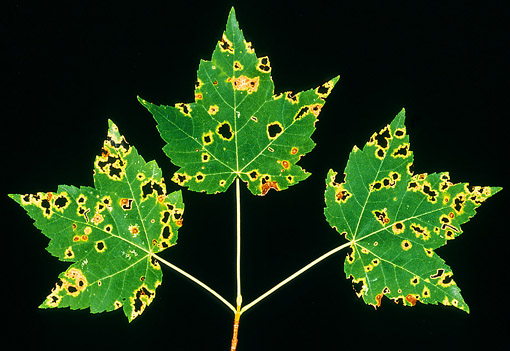How new species are discovered: A new species in our own backyard 2
Tar spot is a common disease of maples. It causes inky black circles on maple leaves — they are the fruiting bodies of a pathogenic fungus. In 1987 there was a bad epidemic of tar spot on Norway maple in upstate New York, leading G.W. Hudler and his colleagues to look closely at the causal fungus. When they compared the disease on Norway maple to that on native red and silver maples, they found marked differences. Careful study led them to believe that tar spot on native maples was caused by a different fungus than tar spot of Norway maple.
Tar spot of Norway maple is caused by Rhytisma acerinum, a fungus that has been well known since 1794. It was described from Europe by the great mycologist, C.H. Persoon. For almost 200 years, tar spot of native North American maples was assumed to be caused by the same fungus. However, Hudler et al. (1998) uncovered differences in host specificity, tar spot diameter, and spore-producing stages. They concluded that our native maples were host to a previously unrecognized species, which they named Rhytisma americanum Hudler & Banik. Following the rules of the International Code of Botanical Nomenclature (ICBN), they designated CUP 65337 (above) as its holotype.
Sometimes undiscovered species are right under our noses.

